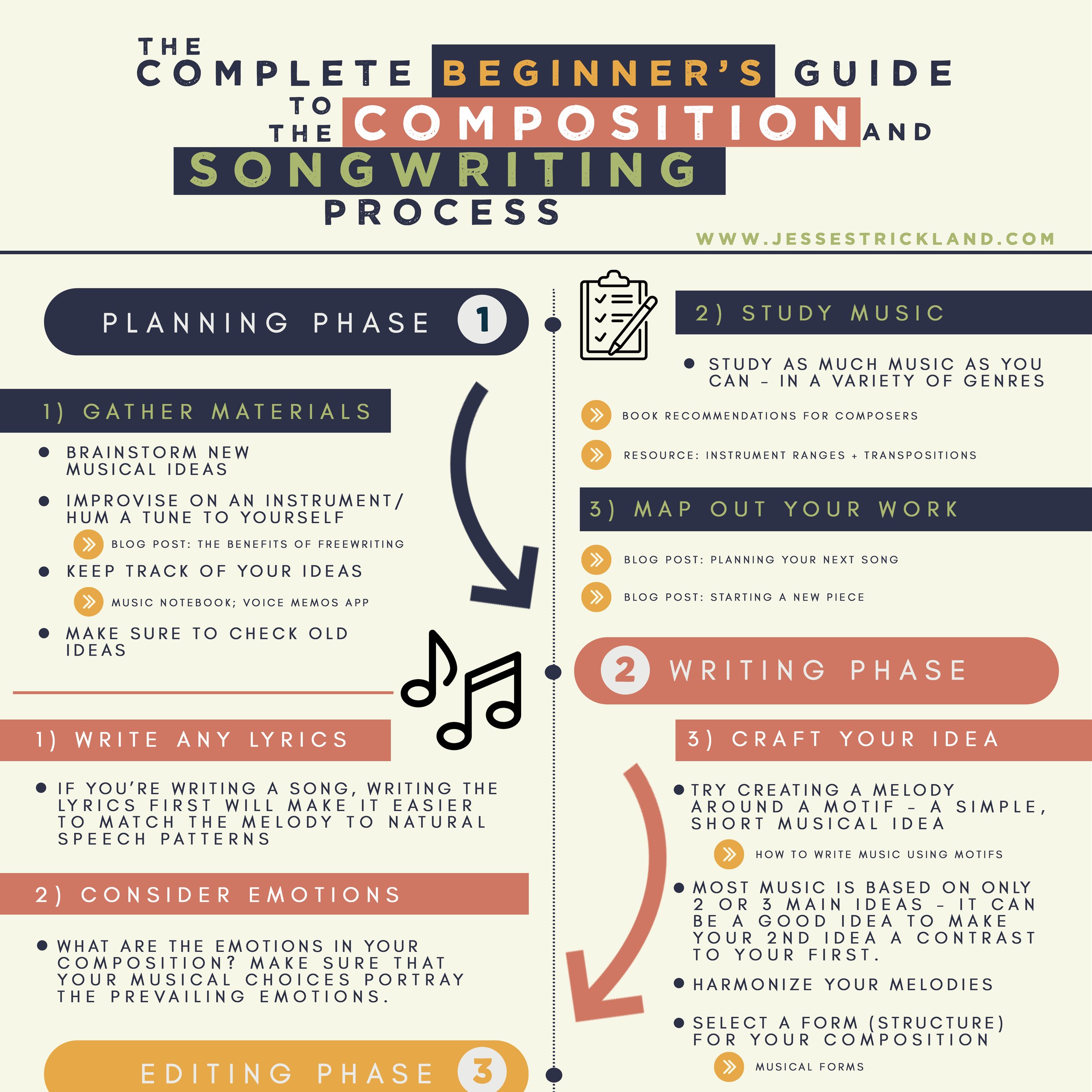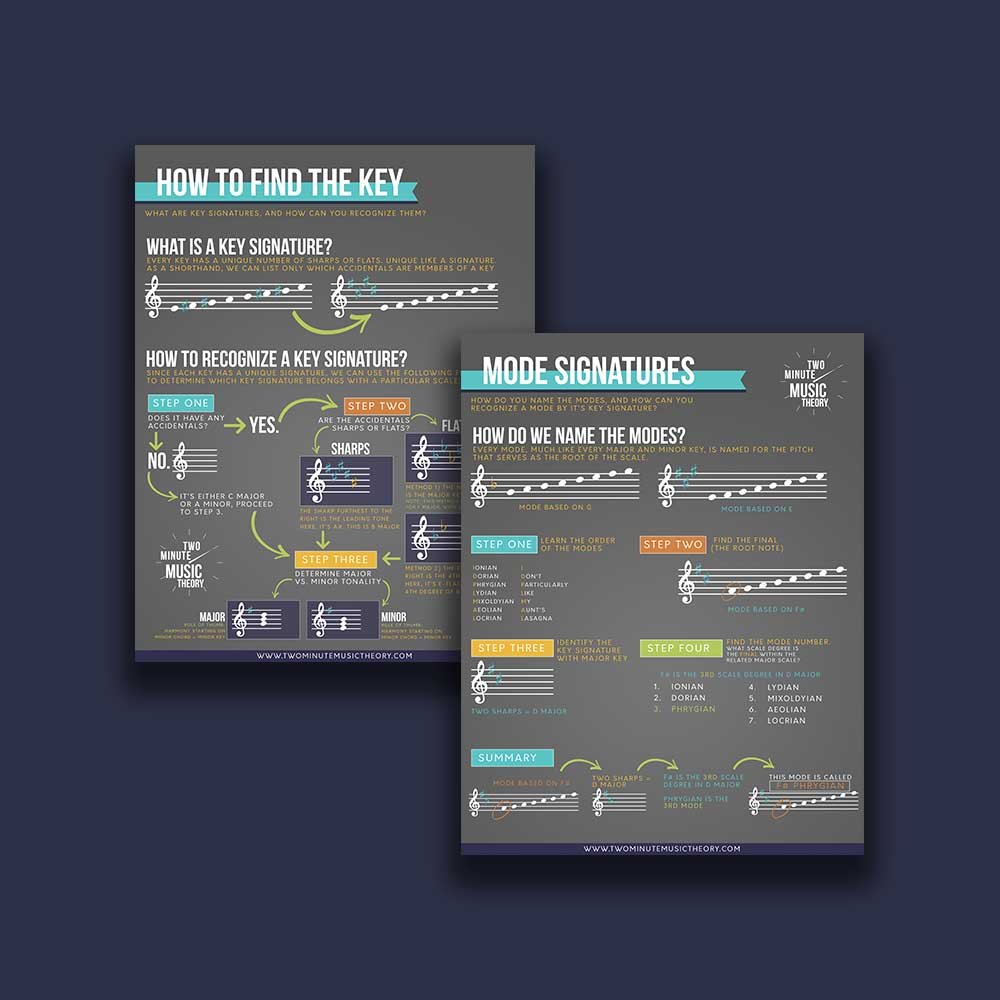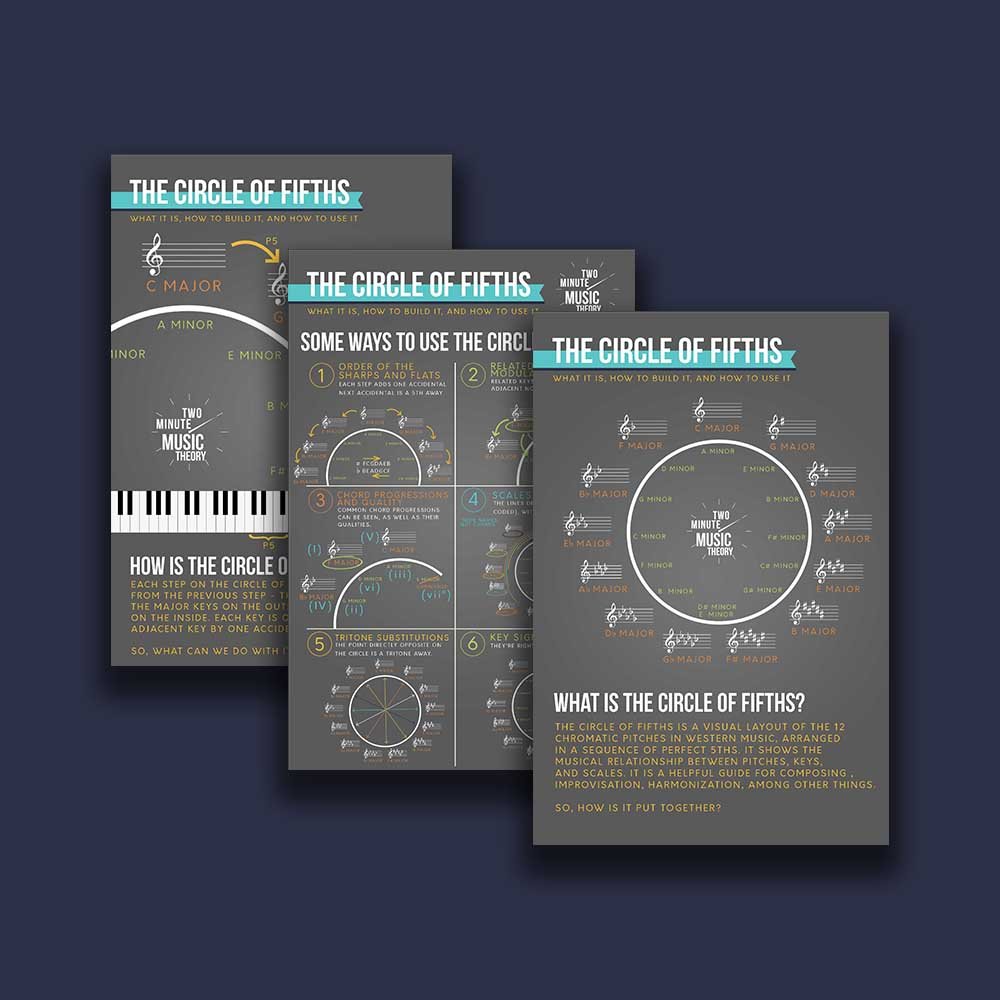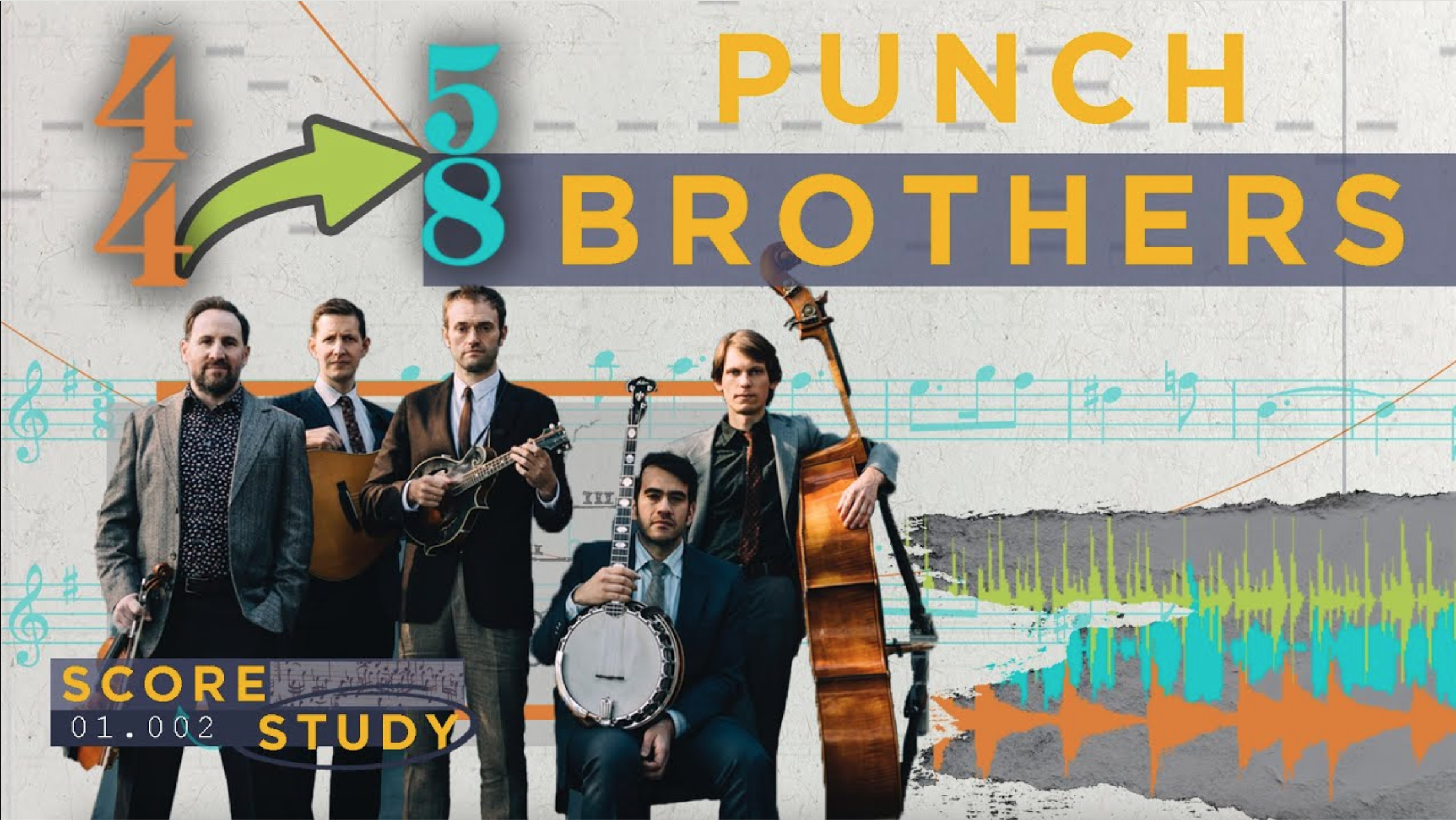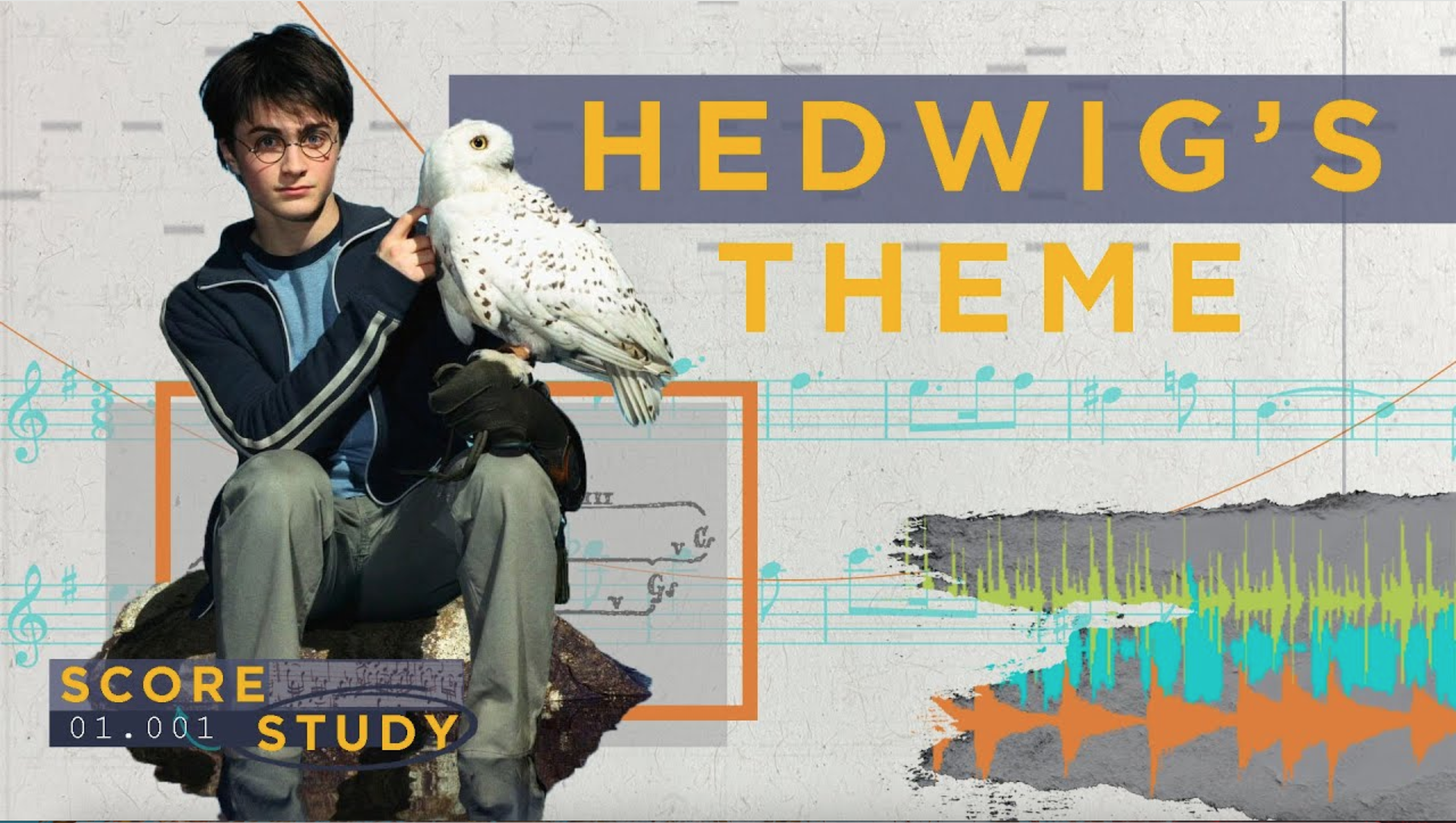
The Simple Way All Scales Work
It may seem like a lot to learn every scale, but there is a simple pattern to the way that all scales work.
Make sure to join the Double Bar Newsletter. A weekly email newsletter designed to help musicians create better music and find their signature voice through deepening their understanding of music.
Why You Should Learn EVERY Scale
Today we are starting a four part video series on the theory of musical scales. In this video, we are talking about the practical reasons why a musician would want to learn every single scale.
Make sure to join the Double Bar Newsletter. A weekly email newsletter designed to help musicians create better music and find their signature voice through deepening their understanding of music.
How Many Musical Elements Are There?
It seems like a question we’d know the answer to. We all kind of know what the elements of music are…right? Today, I’m going on a journey to figure out exactly how many there are. And more importantly, we are talking about why this is a worthwhile endeavor.
If you’re the kind of person who wants to deepen your understanding of music - I highly recommend my email newsletter. I’m sending out a bunch of resources in composition, music theory, and musicology to help you become a better musician.
Exploring Take Five's Brilliant Use of 5/4
Take Five is one of the best selling jazz singles of all time. I've always been fascinated by its use of the 5/4 meter. Today we are looking at how the Dave Brubeck Quartet took this simple idea in a complex meter, and made it into a masterpiece.
Take Five is one of the best selling jazz singles of all time. I've always been fascinated by its use of the 5/4 meter. Today we are looking at how the Dave Brubeck Quartet took this simple idea in a complex meter, and made it into a masterpiece.
music theory resources
Looking for more music theory content?
Exclusive and curated content in composition, music theory, and musicology sent weekly to your inbox.
Featured Music Theory Course
The Art Of Music Theory
Music theory is often confused as being mostly about identification, but really - it's more about interpretation. Music Theory is an art. And it's an artform that is both valuable and practical for all musicians throughout their lifetime.
Music theory is often confused as being mostly about identification, but really - it's more about interpretation. Music Theory is an art. And it's an artform that is both valuable and practical for all musicians throughout their lifetime.
music theory resources
Looking for more music theory content?
Exclusive and curated content in composition, music theory, and musicology sent weekly to your inbox.
Featured Music Theory Course
The Instrument Transposition Chart I Always Wanted
If you’re a performer, conductor, composer, or music student who has to deal with the headache of transposing instruments - I’ve got a brand new resource for you today.
It’s no surprise that transposing instruments are notoriously difficult to understand. The math of compensation is a bear, and that doesn’t even include the notoriously confusing language that goes along with transposition (“it transposes down a perfect fifth? is that written or sounding? so, I need to go down a fifth? I want to punch whoever came up with this.”)
Not only that - in school, I had to learn the ballpark ranges of every instrument. Here’s the thing, it’s difficult to keep memorized - not to mention, we learned the ranges for professional orchestra players. But in my actual work, I usually write for younger ensembles and I need to know their ranges too. It’s another thing that takes a bunch of time and effort to look up.
For the last decade or so, I’ve been compiling a crude version of this on my desk on various scraps of paper so that I don’t have to endlessly google the answer - or flip through an orchestration textbook - only to have to try to decipher what they mean. Now, I’ve completed this “Instrumental and Vocal Ranges and Transpositions” chart as a comprehensive desk reference guide for all musicians.
The chart is divided by instrument family , with 44 instruments total. For each instrument the chart includes:
Ranges for Beginner, Intermediate, Advanced, and Professional Players
Transpositions for each key, and a direct comparison to the concert pitch
Other notes about writing or reading parts for that instrument
Some great applications for this chart:
Writing and arranging for any ensemble that uses staff notation
Study guide for music students who are first learning about the idea of transposition
Educators who are teaching about transposing instruments
Score study for conductors who are using transposing scores
Analysis for music theorists (or music theory students) who are studying scores
Performers who play transposing instruments - especially younger performers
I think you will find this chart to be a priceless addition to your collection, improving your work flow - it has certainly improved mine.
As an aside, if you’ve been considering enrolling in my beginner composition course “Start Write Now”, this chart is included for free when you enroll. Just saying.
To get your copy of the chart click the link below.
further reading
Keys and modes
Here’s a three part video series looking at key signatures, why we need them, how to recognize them, and then how to name the keys and the modes based on their signatures.
Here’s a three part video series looking at key signatures, why we need them, how to recognize them, and then how to name the keys and the modes based on their signatures. I recommend watching these three videos in order.
The charts used in these videos is available in the resources section below.
music theory resources
Looking for more music theory content?
Exclusive and curated content in composition, music theory, and musicology sent weekly to your inbox.
Featured Music Theory Course
How Ligeti Orchestrates A Motif
Orchestration can seem daunting. There can be too many possibilities, and there are a lot of instruments to keep up with. Today we're studying Ligeti's Ricercata III - looking at how he took a piece for solo piano, and orchestrated it for woodwind quintet (flute, oboe, clarinet, horn, and bassoon).
Orchestration can seem daunting. There can be too many possibilities, and there are a lot of instruments to keep up with. Today we're studying Ligeti's Ricercata III - looking at how he took a piece for solo piano, and orchestrated it for woodwind quintet (flute, oboe, clarinet, horn, and bassoon).
Then in the second video, I'm taking my first ever piece for solo piano, and orchestrating it for woodwind quintet. I’ll be walking you through basic principles of orchestration based on the three ideas we talked about in the Ligeti orchestration.
Make sure to get your copy of the Score Study Field Guide in the resources section below.
music theory resources
Looking for more music theory content?
Exclusive and curated content in composition, music theory, and musicology sent weekly to your inbox.
Featured Music Theory Course
Sonata Form in Two Minutes (roughly)
Volumes of Dissertations have been written on the topic; and while it is endlessly nuanced, it doesn't have to be hard to understand the basics. Today, we're looking at the exposition, development, and recapitulation of Sonata-Allegro Form.
Volumes of Dissertations have been written on the topic; and while it is endlessly nuanced, it doesn't have to be hard to understand the basics. Today, we're looking at the exposition, development, and recapitulation of Sonata-Allegro Form.
music theory resources
Looking for more music theory content?
Exclusive and curated content in composition, music theory, and musicology sent weekly to your inbox.
Featured Music Theory Course
What Do Chord Inversion Numerals Mean?
It's Two Minute Music Theory's 7th Birthday! I thought it would be appropriate to release a good old fashioned TMMT episode that's not 2 minutes long. Thanks to everyone for all of your support the last 7 years. Here's to the next 7.
It's Two Minute Music Theory's 7th Birthday! I thought it would be appropriate to release a good old fashioned TMMT episode that's not 2 minutes long. Thanks to everyone for all of your support the last 7 years. Here's to the next 7.
music theory resources
Looking for more music theory content?
Exclusive and curated content in composition, music theory, and musicology sent weekly to your inbox.
Featured Music Theory Course
Five Tips For Understanding Music Theory
Music Theory has built a reputation for being a very confusing subject. Some jokes around the internet even suggest that it is harder than rocket science. But it doesn’t have to be that way. There are things that we can do to help make music theory make more sense. And I’ve got five of them for you today.
Music Theory has built a reputation for being a very confusing subject. Some jokes around the internet even suggest that it is harder than rocket science. But it doesn’t have to be that way. There are things that we can do to help make music theory make more sense. And I’ve got five of them for you today.
More information about the online course UNDERSTANDING MUSIC THEORY can be found below.
music theory resources
Looking for more music theory content?
Exclusive and curated content in composition, music theory, and musicology sent weekly to your inbox.
Featured Music Theory Course
How the Punch Brothers Converted Church Street Blues from 4/4 to 5/8
Today we're looking at 6 tips for converting from common meter to complex meter by analyzing the Punch Brothers cover of Tony Rice's Church Street Blues.
Today we're looking at 6 tips for converting from common meter to complex meter by analyzing the Punch Brothers cover of Tony Rice's Church Street Blues.
music theory resources
Looking for more music theory content?
Exclusive and curated content in composition, music theory, and musicology sent weekly to your inbox.
Featured Music Theory Course
Re-Writing My First Melody Using Music Theory
I get a lot of questions about how to use music theory to write music. So, today I'm taking a look at a melody I wrote a long time ago to see how I can improve it using concept we learn in Theory I and II.
I get a lot of questions about how to use music theory to write music. So, today I'm taking a look at a melody I wrote a long time ago to see how I can improve it using concept we learn in Theory I and II.
music theory resources
Looking for more music theory content?
Exclusive and curated content in composition, music theory, and musicology sent weekly to your inbox.
Featured Music Theory Course
Score Study: The Magic Hidden in the Harry Potter Theme
Starting a new series today! This is the first episode of a new series called Score Study, where I’ll be looking at very specific moments in a piece of music, breaking it down from a composer’s perspective, and then we’ll try to write something as an exercise from what we’ve learned.
Starting a new series today! This is the first episode of a new series called Score Study, where I’ll be looking at very specific moments in a piece of music, breaking it down from a composer’s perspective, and then we’ll try to write something as an exercise from what we’ve learned.
Make sure to get your copy of the Score Study Field Guide below!
music theory resources
Looking for more music theory content?
Exclusive and curated content in composition, music theory, and musicology sent weekly to your inbox.
Featured Music Theory Course
What Is The Circle of Fifths And How To Use IT
It’s one of the most useful tools in music theory, but what is it and how do we use it?
Make sure to get the chart from this episode down below!
It’s one of the most useful tools in music theory, but what is it and how do we use it?
Make sure to get the chart from this episode down below!
music theory resources
Looking for more music theory content?
Exclusive and curated content in composition, music theory, and musicology sent weekly to your inbox.
Featured Music Theory Course
Does Music Theory Have Rules?
Music theory is often thought of as a list of rules that govern music: Parallel 5ths are illegal; You can't double the leading tone; dominant must go to tonic. But is that really true? Are there actually any rules in music theory?
Music theory is often thought of as a list of rules that govern music: Parallel 5ths are illegal; You can't double the leading tone; dominant must go to tonic. But is that really true? Are there actually any rules in music theory?
music theory resources
Looking for more music theory content?
Exclusive and curated content in composition, music theory, and musicology sent weekly to your inbox.
Featured Music Theory Course
Vince Guaraldi’s Brilliant use of Repetition
Music is a balance between new and repeated material. Today we're looking at "Linus and Lucy" by the Vince Guaraldi Trio, from the Charlie Brown Christmas Special. How does this Peanuts' classic teach us about repeats? We'll look at ostinatos, loops, melodic structure, and Rondo Form.
Music is a balance between new and repeated material. Today we're looking at "Linus and Lucy" by the Vince Guaraldi Trio, from the Charlie Brown Christmas Special. How does this Peanuts' classic teach us about repeats? We'll look at ostinatos, loops, melodic structure, and Rondo Form.
music theory resources
Looking for more music theory content?
Exclusive and curated content in composition, music theory, and musicology sent weekly to your inbox.
Featured Music Theory Course
How Eric Whitacre Writes A Clusterchord
Today we're looking at the 14-part clusterchord from Water Night by Eric Whitacre, how it is constructed, and how it all works - thanks to a good preparation of voicing and voice-leading.
Today we're looking at the 14-part clusterchord from Water Night by Eric Whitacre, how it is constructed, and how it all works - thanks to a good preparation of voicing and voice-leading.
music theory resources
Looking for more music theory content?
Exclusive and curated content in composition, music theory, and musicology sent weekly to your inbox.






